The US has grievously hurt its international credibility with a self-inflicted defeat and humiliation in Afghanistan. Its enemies can only be celebrating. The security and humanitarian disaster that the Biden administration has unleashed in Afghanistan will likely unravel whatever is left of American primacy.
Brahma Chellaney | OPEN magazine
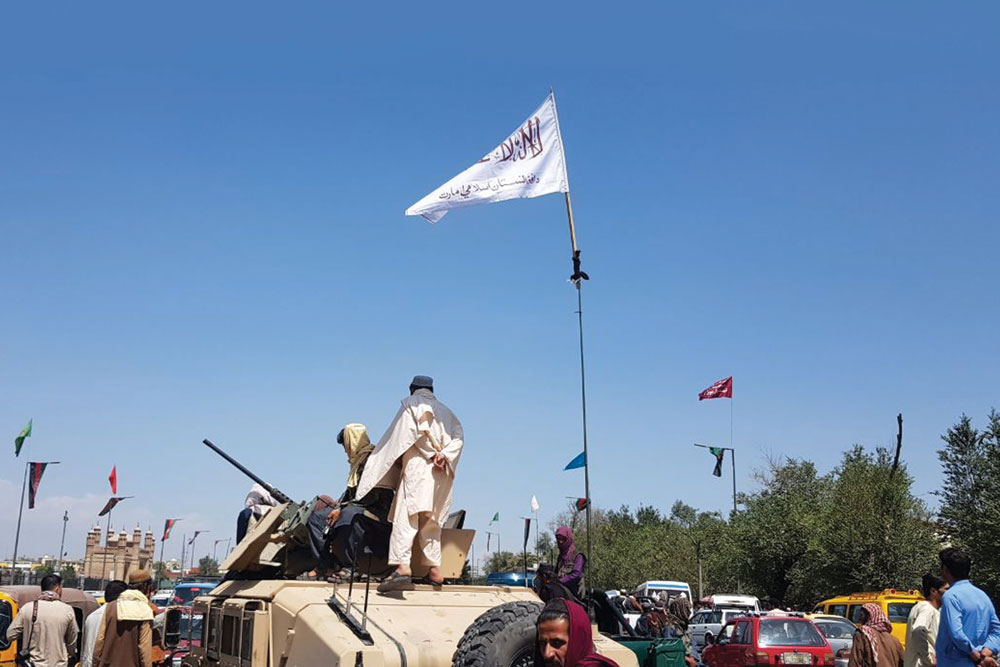
BETRAYAL, VIOLENCE AND surrender have defined Afghanistan’s history for long, especially as the playground for outside powers. The US-midwifed terrorist takeover of Afghanistan fits with that pattern. When an ageing US president, refusing to consider conditions on the ground, overrules his military generals and intelligence agencies and orders a precipitous and ill-planned action, it is a sure recipe for a foreign policy disaster. The blame for the international humiliation wreaked on the US by the terrorist capture of Afghanistan must be laid squarely at the door of Joe Biden, the oldest person to ever assume the American presidency.
The fact that the US, however unwittingly, aided the Taliban conquest of Afghanistan is likely to redraw attention to American policies which, over the decades, have spawned dangerous jihadists. America’s troubling ties with violent Islamists were cemented in the 1980s when President Ronald Reagan’s administration used Islam as an ideological tool to incite armed resistance to the Soviet military intervention Afghanistan. In 1985, at a White House ceremony attended by several Afghan mujahedeen (jihadists), Reagan gestured toward his guests and declared, “These gentlemen are the moral equivalent of America’s founding fathers.”
Within years, however, many of the moral equivalents of America’s founding fathers, including Osama bin Laden, came to haunt US security. Yet, there was never any debate in the US on the lessons for the US from the CIA’s creation of jihad-extolling mujahideen. In fact, under President Barack Obama, the US ruined two countries—Libya and Syria—by arming jihadists to topple governments there.
The experiment in Syria, the second largest covert operation in CIA’s history after the clandestine war against the Soviet forces in Afghanistan in the 1980s, failed to overthrow President Bashar al-Assad. But the US-led intervention in Libya led to seven months of NATO airstrikes in the name of democracy, resulting in the overthrow of the secular dictatorship that Muammar el-Qaddafi ran for 42 years and the still-continuing jihadist chaos there.
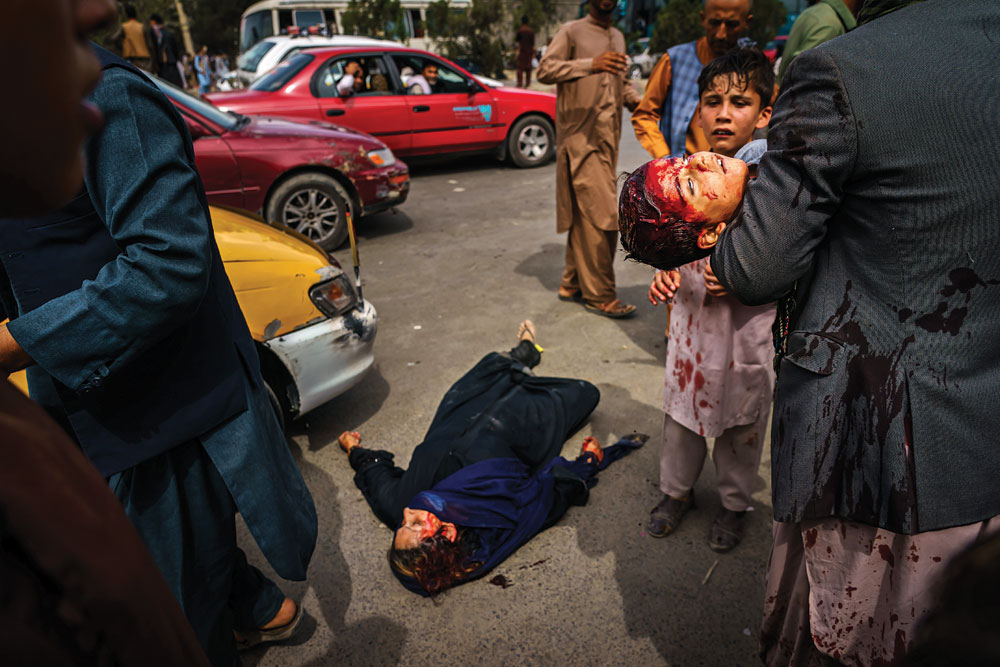
Against this background, it is worth remembering how the US got into an overt war in Afghanistan that became the longest armed conflict in American history. The US-led invasion in October 2001 ousted the Taliban from power in Kabul for harbouring the Al Qaeda planners of the 9/11 terrorist attacks. However, the key Al Qaeda leaders, including Osama bin Laden, Khalid Sheik Mohammed, Abu Zubaida and Ramzi Binalshibh, were later found holed up inside Pakistan. Yet, paradoxically, the US, while raining bombs on Afghanistan for almost 20 years, rewarded Pakistan in the same period with tens of billions of dollars in aid.
It was the US reluctance to take the war to the other side of the Durand Line by targeting the Taliban’s command-and-control bases in Pakistan that undercut America’s war effort in Afghanistan. Rather than degrade and decapitate the Taliban, the US sought “reconciliation” with its battlefield enemy, allowing the medieval, jihadist militia to gain strength and terrorise Afghans. As General John Nicholson, the then US military commander in Afghanistan, admitted in 2017, , “It is very difficult to succeed on the battlefield when your enemy enjoys external support and safe haven.” The reluctance to target the Taliban’s cross-border network structure in Pakistan hobbled the US military mission in Afghanistan right until Biden’s bungling military exit.
The fact is that, in modern world history, no counterterrorism campaign has ever succeeded when the militants have enjoyed cross-border state sponsorship and safe havens. This also explains why terrorists remain active in the Kashmir Valley. As former CIA Director General David Petraeus said recently, “the Taliban, Haqqani Network and the other associated extremists and insurgents have their headquarters, their major bases, outside of Afghanistan and beyond our reach in Pakistan, where our Pakistani partners refuse to eliminate them from their soil. So, you could never truly win.”

The protracted search for a Faustian bargain with the Taliban also explains why that ruthless militia was never added to the US list of Foreign Terrorist Organizations. This approach counterproductively led to an ascendant Taliban expanding their territorial control and killing government forces in growing numbers.
By spurning the advice of his civilian and military advisers and unleashing the Afghanistan disaster, Biden must shoulder the blame for America’s international humiliation. Let us be clear: there was no strategic or domestic imperative for Biden to order a hasty and total pullout
The Taliban, like Al Qaeda, evolved from the violent jihadists that the CIA trained in Pakistan to wage war against the Soviet invasion in Afghanistan. It was only after the September 11th, 2001, terrorist attacks at home that the US turned against the Taliban. Then, in search of a face-saving exit from the military quagmire in Afghanistan, America embraced the Taliban by concluding a “peace” deal with them. That development eventually led the US to unwittingly enable the conquest of Afghanistan by the same thuggish group that it had removed from power in 2001.
AMERICA’S FATEFUL DEAL WITH TALIBAN
It was US President Donald Trump’s capitulation to the Taliban at the negotiating table that set in motion events that culminated under his successor in America’s humiliating rout in Afghanistan. The deal was clinched after more than a year of negotiations, with US and Taliban representatives signing the agreement on February 29th, 2020 at Doha, Qatar.
Desperate to exit Afghanistan, Trump accomplished what his predecessor set out to do but failed—to cut a deal with the Taliban. It was with the aim of facilitating direct talks with the Taliban that Obama allowed the militia to establish a de facto diplomatic mission in Doha in 2013. Then, to meet a Taliban precondition, the Obama administration freed five hardened Taliban militants (two of them accused of carrying out massacres of Tajiks and Hazaras) from Guantánamo Bay. The five were described by the late US Senator, John McCain, as the “hardest of hard core”.
But when the then Taliban chief, Mullah Akhtar Mansour, defiantly refused to revive stalled peace negotiations, the CIA, on Obama’s orders, assassinated him inside Pakistan with a drone strike in 2016. Although Obama hailed Mansour’s killing as “an important milestone”, it did little to change military realities on the ground.
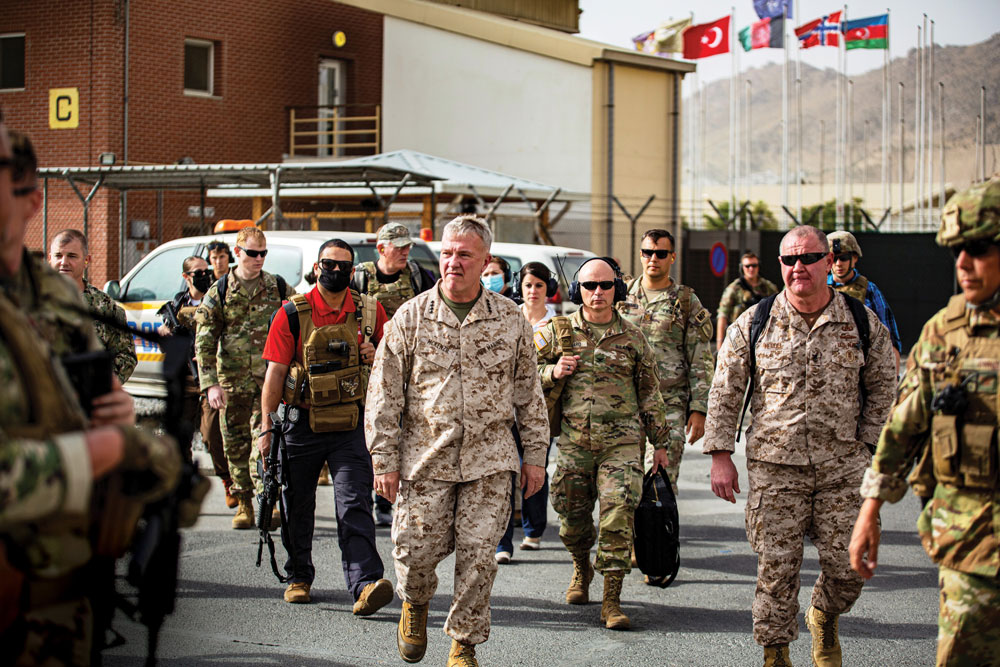
After Trump came to power, he promised to reverse the worsening Afghanistan situation that he inherited from Obama by “winning again”. Yet, two years into his term, he embarked on fulfilling his predecessor’s quest for a deal with the Taliban. Trump’s message, including from his drawdown of US troops in Syria, was unmistakable: To exit from messy situations of its own making, the US doesn’t mind throwing its allies under the bus—from the Afghan government to its Kurdish partners in Syria.
Instead of the promised Afghan-led and Afghan-owned peace process, Trump clinched the deal with the Taliban without prior consultations with Kabul and then sought to sell it to a sceptical Afghan President Ashraf Ghani. In doing so, Washington involuntarily aided the Taliban effort to delegitimise the elected Afghan government. Given that Ghani was blindsided by the “peace” accord, it was no surprise that Washington did not care to take India, its supposed “major defence partner”, into confidence either.
Under the largely one-sided deal, America committed to the withdrawal of all US and NATO forces by May 1st, 2021. By promising a terrorist militia a total American military exit in about 14 months as well as a pathway to power in Kabul, the US, in essence, entered the terms of its surrender in the agreement.
The accord US special envoy Zalmay Khalilzad finalised with the Taliban in Qatar read more like US capitulation to a terrorist organisation. The US, despite having earlier signed a security pact with Kabul in 2014 to maintain nine military bases, conceded the Taliban’s main demand for a total American exit. In exchange, the terrorist group offered a fig leaf—a promise to deny other terrorist networks a foothold on Afghan soil. However, as a recent United Nations Security Council report pointed out, “the Taliban and Al Qaida remain closely aligned” and cooperate through the Pakistan-based Haqqani Network, a veritable arm of Pakistani intelligence.
The deal was a major diplomatic win for the Taliban’s sponsor, Pakistan, which, until the Taliban’s recent takeover of Afghanistan, sheltered the top Taliban leadership and provided cross-border sanctuaries to Taliban fighters. A year before the deal with the Taliban, Trump had cut off most security assistance to Pakistan, saying, “The US has foolishly given Pakistan more than 33 billion dollars in aid over the last 15 years, and they have given us nothing but lies and deceit, thinking of our leaders as fools. They give safe haven to the terrorists we hunt in Afghanistan, with little help.”
Yet in February 2020, Trump agreed to abandon Afghanistan to Pakistan’s machinations. Under successive US presidents, Pakistan has been rewarded for sponsoring cross-border terrorism.
The Doha agreement document, as revealed to the public, was short. It, however, contained classified appendices that were never declassified. Two of the elements contained in the secret appendices, as acknowledged in US congressional testimony, were: one, the Taliban pledged not to attack US or allied forces or civilians during the period through the promised US and NATO military exit by May 1st, 2021; and two, the Taliban and the US agreed to jointly target their common enemy, the Islamic State (ISIS)-Khorasan, on the basis of US intelligence shared with the Taliban.
The Taliban, by all publicly available accounts, did stick to their first promise other than committing one violation, when they attacked a joint US-Afghan base. But that promise left the Taliban free to escalate their hit-and-run attacks against Afghan forces and civilians, which they did with increasing brutality. What was dubbed as a “peace” deal engendered greater bloodshed and, as Biden admits, “left the Taliban in the strongest position militarily since 2001.”
Indeed, the “peace” deal not only granted the Taliban respectability and legitimacy, but also meant war on Afghan women and civil liberties. By concluding the deal behind the Afghan government’s back and by excluding the lawfully constituted government from the agreement, the US left intra-Afghan reconciliation talks to move on a separate track. But the Taliban, with their determination to impose a military solution, had no incentive to negotiate in good faith with the Afghan government, let alone to make concessions, because the US had unconditionally agreed to gradually draw down its forces and leave Afghanistan.
In this light, the die had been cast in February 2020 that the US would exit Afghanistan, no matter what. The deal led not only to greater terrorist attacks by the Taliban but also eventually to the unravelling of the elected Afghan government.
BIDEN’S RECORD OF BLUNDERS
Robert Gates, who served as defence secretary under presidents George W Bush and Obama, wrote in a 2014 memoir that Joe Biden “has been wrong on nearly every major foreign policy and national security issue over the past four decades”. Biden’s surrender of Afghanistan to the terrorist Taliban vindicates Gates’ grating assessment. By spurning the advice of his civilian and military advisers and unleashing the Afghanistan disaster, Biden must shoulder the blame for America’s international humiliation.
Let us be clear: There was no strategic or domestic imperative for Biden to order a hasty and total pullout of the US force that had been drastically cut, as he admitted a day before Kabul fell, to the “bare minimum of 2,500” before his predecessor left office.
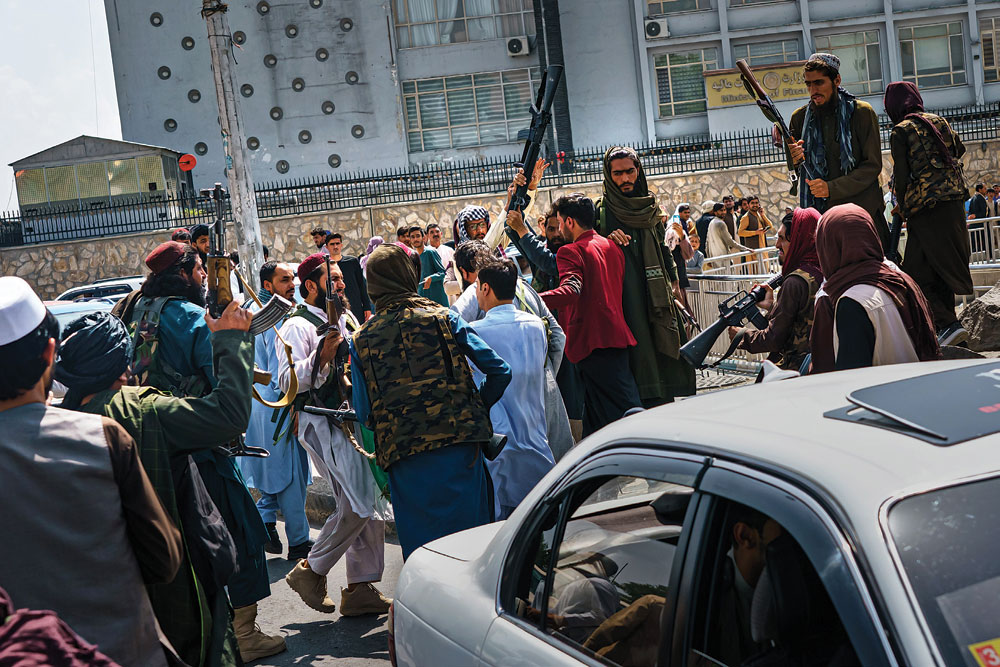
The small US force could have been easily sustained with relatively modest cost and little risk to American lives. Not a single American soldier had been killed in fighting in the past more than a year-and-a-half, essentially because only Afghan soldiers were on the frontlines since the US combat role in Afghanistan ended on December 31st, 2014. The residual US force was mainly playing a supporting role.
Yet Biden rebuffed his top military commanders’ advice in April and ordered all American troops to rapidly return home. Biden also ignored the report of the bipartisan Afghanistan Study Group that recommended a conditions-based withdrawal while warning that a hurried, unconditional military exit would “leave America more vulnerable to terrorist threats” and have “catastrophic effects in Afghanistan and the region.”
When the Taliban were previously in power, their brutal record evoked the horrors perpetrated by Cambodia’s Khmer Rouge. The reestablishment of a jihadist, theocratic dictatorship in Kabul will likely destabilise the region
In fact, an unclassified version of the US intelligence community’s global threat assessment had warned in April that, “The Taliban is likely to make gains on the battlefield, and the Afghan Government will struggle to hold the Taliban at bay if the coalition withdraws support.” Biden, however, refused to listen to any advice suggesting caution or developing a transition plan for the Afghan forces, which for combat operations were highly reliant on US and NATO capabilities—from intelligence and close air support to emergency logistics and medical evacuation.
The irony is that Biden was facing no public pressure to quickly end the Afghanistan War. Contrary to the American media trope about “war weariness”, there was no evidence that Americans were tired of the military entanglement in Afghanistan, especially given the very small number of troops involved in the mission and the minimal casualties.
In fact, Gallup polling over the course of the 20-year war in Afghanistan repeatedly found Americans to be more supportive than opposed to that military intervention. The sustained public support to the longest war in American history was in stark contrast to previous US wars, including in Korea, Vietnam and Iraq, during which the majority public opinion at some point turned unfavourable, giving rise to anti-war movements.
It was only after Biden had effectively ended the Afghanistan War on July 1st (when US forces secretly pulled out at night from the sprawling Bagram Airbase, which had long served as the staging ground for operations in the country) that an American partisan divide over the war became distinct. (The Biden administration, in unpublicised negotiations with the Taliban, had secured a short extension of the original May 1st deadline for exit.) In a July 6-21 Gallup poll, 47 per cent Americans (the vast majority of them Democrats) said the war was a mistake, while 46 per cent said it wasn’t.
If there was any imperative for a rushed withdrawal, it was Biden’s woolly-headedness to honour a one-sided US deal with the Taliban that Trump had bequeathed. The Taliban, Pakistan’s longstanding proxies whose brutal attacks over the years made them the world’s deadliest terrorists, had been openly violating the deal, so Biden’s sticking to it made little sense.
Indeed, Biden’s clinging to a blighted deal seriously compounded a US pattern of undermining the Afghan government, including forcing Afghan authorities last year to release 5,000 jailed Taliban terrorists (a number equivalent to the size of two US army brigades or regiments). The freed terrorists helped spearhead the Taliban reconquest of the country.
If Biden did not want to retain 2,500 troops in Afghanistan, he could have reduced their number to just 1,000 to provide critical air support and reassurance to Afghan forces. That would have averted the disaster that has unfolded. But Biden, seeking to imprudently safeguard a deal that had already been wrecked by the Taliban, ruled that option out.
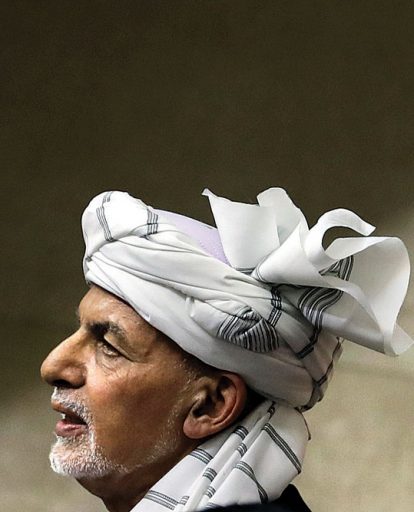
As one Afghan city after another fell to the Taliban and several American Senators and retired generals urged the White House to immediately unleash US military might to halt the militia’s further advances so as to save Kabul, Biden issued a statement on August 14th that proved the final nail in the coffin for a secular Afghanistan. Biden adamantly stated that, “I was the fourth President to preside over an American troop presence in Afghanistan—two Republicans, two Democrats. I would not, and will not, pass this war onto a fifth.”
By confirming that his dumping of the Afghan government was irrevocable, the statement led next day to two momentous events—President Ashraf Ghani’s hurried escape from Afghanistan, followed quickly by the fall of Kabul.
This background illustrates how Biden’s actions aided and abetted the terrorist capture of Afghanistan. As a lawmaker from Biden’s own Democratic Party, Dean Phillips, put it, it is the Biden administration’s execution of the Trump-initiated exit strategy that “clearly, by any measure, has been a dramatic failure and stain on the United States.”
By confirming that his dumping of the Afghan government was irrevocable, Biden’s statement led next day to two momentous events—president ashraf Ghani’s hurried escape from Afghanistan, followed quickly by the fall of Kabul
When the Taliban were previously in power, their brutal record, including destroying historic and cultural artefacts, , evoked some of the horrors perpetrated by Cambodia’s China-backed ultra-communist Khmer Rouge between 1975 and1979. The Taliban’s reestablishment of a jihadist, theocratic dictatorship in Kabul will likely destabilise the region.
The US and its Western allies are located far away. But with the terrorist takeover of Afghanistan, India is being encircled by the China-Pakistan strategic nexus. In fact, the Taliban reconquest of Afghanistan will facilitate an even stronger China-Pakistan axis against India, while aiding the Pakistani intelligence’s proxy war against Indian targets.
The stepped-up threat from the axis may not be of immediate nature, yet the Taliban’s success creates greater strategic space for the two revisionist allies, China and Pakistan, to collaborate and advance their interests at India’s expense. This, coupled with Pakistan’s long-coveted acquisition of “strategic depth” in Afghanistan, holds significant, long-term implications for the security of India and the wider region.
Simply put, after the Afghan people and Afghan nation, India will be the biggest loser from Biden’s Afghanistan blunder.
THE END OF THE AMERICAN ERA
The US has grievously hurt its international credibility and standing with a self-inflicted defeat and humiliation in Afghanistan. And its enemies can only be celebrating.
The US, the world’s preeminent power since 1945, has long prioritised the safeguarding of that privileged position. But even before the Afghanistan debacle, America’s global primacy had been slowly eroding. The security and humanitarian disaster that the Biden administration has unleashed in Afghanistan will likely unravel whatever is left of American primacy.
Biden’s fantasy that US security could be advanced simply by bringing back American troops enabled terrorists to recapture Afghanistan. The debacle shows how a fawning media can be dangerous. The US mainstream media had literally spearheaded Biden’s presidential campaign, trashing his opponent and concealing the Hunter Biden scandal. They still slobber over him.
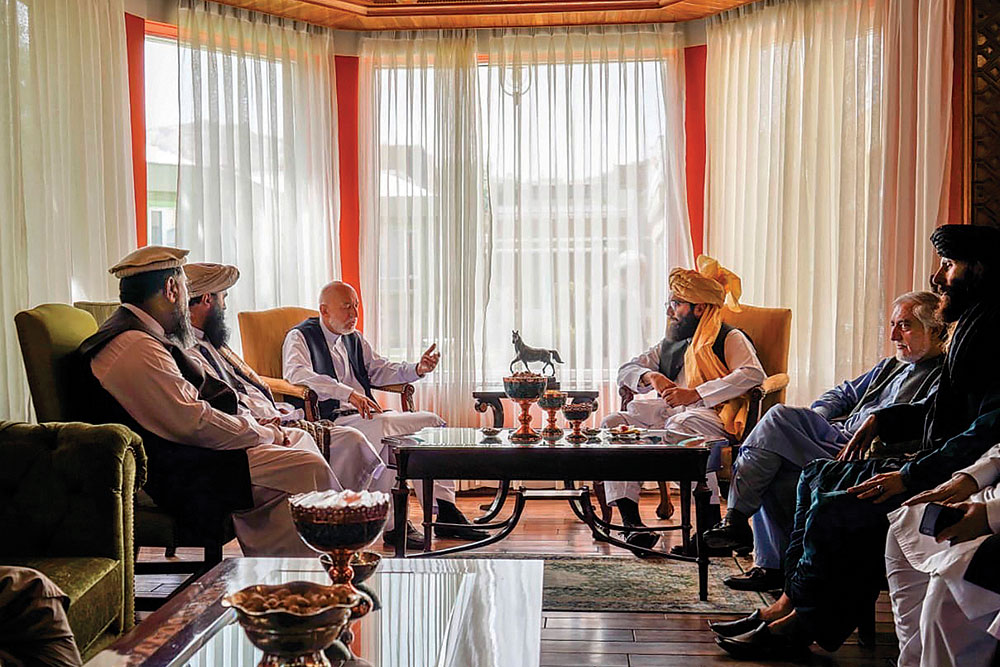
When Biden ordered a hasty total withdrawal from Afghanistan by overruling top military generals, the US media didn’t question his decision. Contrast that with the way the US media had roasted Trump when, ignoring military advice, he drastically cut troop levels in Afghanistan. It was with the domestic media’s support that Biden embarked on a path of self-delusion, with him and his team naively believing that the US could use aid and sanctions relief to moderate the Taliban and prevent that militia from pursing a military solution.
In his headlong rush to exit Afghanistan, Biden neglected to consult with America’s allies on the tactics or timing. Instead, Biden acted more like his predecessor, whose unilateralism he had repeatedly criticised. Biden’s unilateralist actions that precipitated the Afghanistan disaster, according to one news report, have left America’s closest ally, Britain, “embarrassed and embittered”.
Like a Santa Claus at Christmas, Biden delivered three gifts to the world’s most brutal militia.
First, Biden facilitated the Taliban’s lightning conquest of Afghanistan, including the bloodless takeover of Kabul. The capture of the capital without firing a shot represented a major propaganda success for the Taliban, given that the new rulers need international recognition and economic assistance to govern Afghanistan. A bloody seizure of Kabul would have made the task of securing recognition and aid very difficult.
The Taliban reconquest of Afghanistan will facilitate an even stronger China-Pakistan axis against India, while aiding the Pakistani intelligence’s proxy war against Indian targets. After the Afghan people and Afghan nation, India will be the biggest loser from Biden’s Afghanistan blunder
Second, the Biden-enabled terrorist takeover of Afghanistan has boosted the Taliban’s terrorising capabilities with massive caches of US-made weapons, including artillery, Humvees, helicopters, planes and armoured vehicles. Thanks to Biden, the Taliban now have what they had never dreamed of—an air force.
According to fleet data from Cirium, the Afghan Air Force and Special Mission Wing had 284 aircraft in active use before the Taliban completed its sweep of Afghanistan on August 15th. Between August 14th and 15th, Cirium reported that “a large number of Afghan Air Force aircraft and helicopters were flown by ‘escaping aircrew’ to Termez, Uzbekistan.” A few helicopters and aircraft were also flown to Tajikistan.
But some US-supplied assets that remained on the ground at Afghan airbases have come under Taliban control. These include armed MD530 rotorcraft, UH-60A Black Hawk helicopters, A-29 Super Tucano armed turboprops and MD-530F light scout attack helicopters, as well as Soviet-made Mi-17s. Given China’s longstanding ties with the Taliban, the US has a difficult task at hand in the present circumstances to prevent its technological knowhow from falling into Chinese hands.
Biden’s National Security Advisor, Jake Sullivan, admits that a “fair amount” of US weaponry has fallen into Taliban hands. Some reports suggest that a lot of arms, ammunition, military equipment and military vehicles have moved across the border into Pakistan, the Taliban’s procreator.
Third, Biden has helped deliver to the Taliban Afghanistan’s vast mineral wealth, estimated to total between $1 trillion and $2 trillion in value. The untapped resources open the path for the Taliban to move from their traditional reliance on opium and heroin trade for income to developing the country’s mining industry with China’s help, which has long sought to exploit Afghanistan’s rich lithium, copper, iron, cobalt and rare-earth deposits.
The Taliban may have an “emir”, or spiritual leader, who was long holed up near Quetta in Pakistan, but in Biden, they have found a godfather.
Old age is usually associated with caution and judiciousness. But the 78-year-old Biden has lived up to the adage “Act in haste, repent at leisure”. In doing so, he has undermined the trust of allies in US leadership. America’s allies henceforth will balk at unquestioningly toeing its line on issues in which they have a stake. Biden, by handing Afghanistan to terrorists, has also undercut the US-led global war on terror. The US may not be able to recoup from the Afghanistan disaster.
Yet, Biden refuses to accept any responsibility for bringing the Taliban back to power. In his August 16 speech to the nation after the Taliban completed its sweep, Biden blamed everyone—from Trump to the Afghan government and Afghan military—except the Taliban and himself. As The Wall Street Journal put it editorially, Biden is “determined in retreat, defiant in surrender, and confident in the rightness of consigning the country [Afghanistan] to jihadist rule.”
In fact, to escape culpability for the terrorist takeover of Afghanistan, Biden has pinned the blame on Afghan troops for not putting up a fight—a myth the US mainstream media has been quick to embrace. In truth, Biden pulled the rug out from under the Afghan forces’ feet, with his precipitous withdrawal leaving the Afghan military high and dry.
It is America’s misfortune that, at a critical juncture when China is aggressively expanding its strategic footprint and clout, it is led by a weak president whose repeated bungling in a short time has triggered major crises from the southern US border with Mexico to Afghanistan. America’s enemies can only be emboldened by a president who rationalises his bungling in Afghanistan as strategic prudence. Foes will see such fecklessness as an opportunity for them to seize.
Brahma Chellaney is a geostrategist and author.

You must be logged in to post a comment.